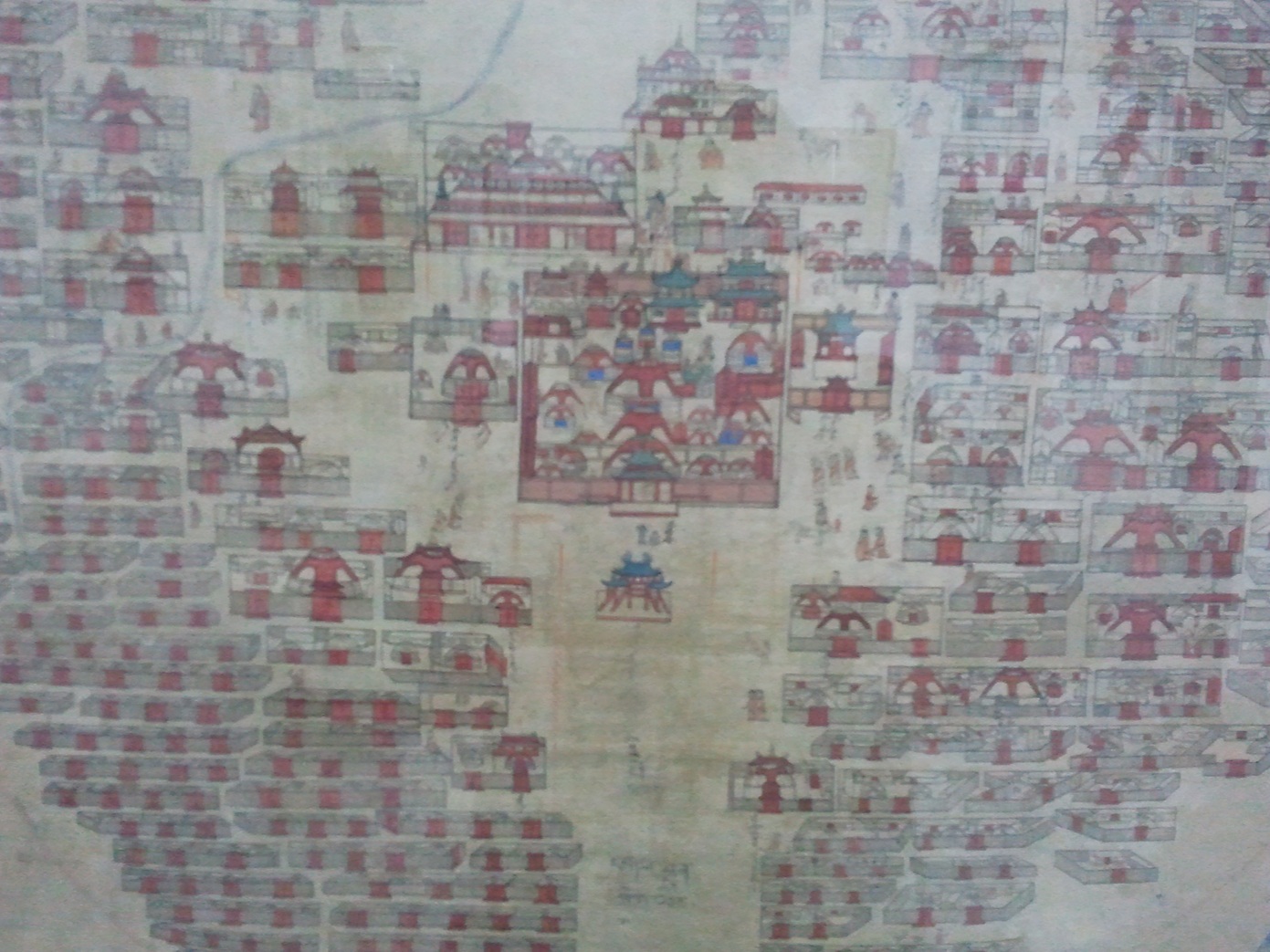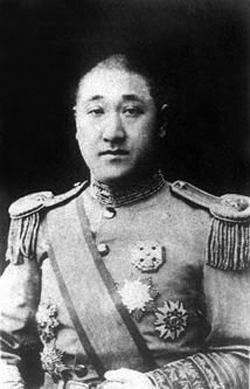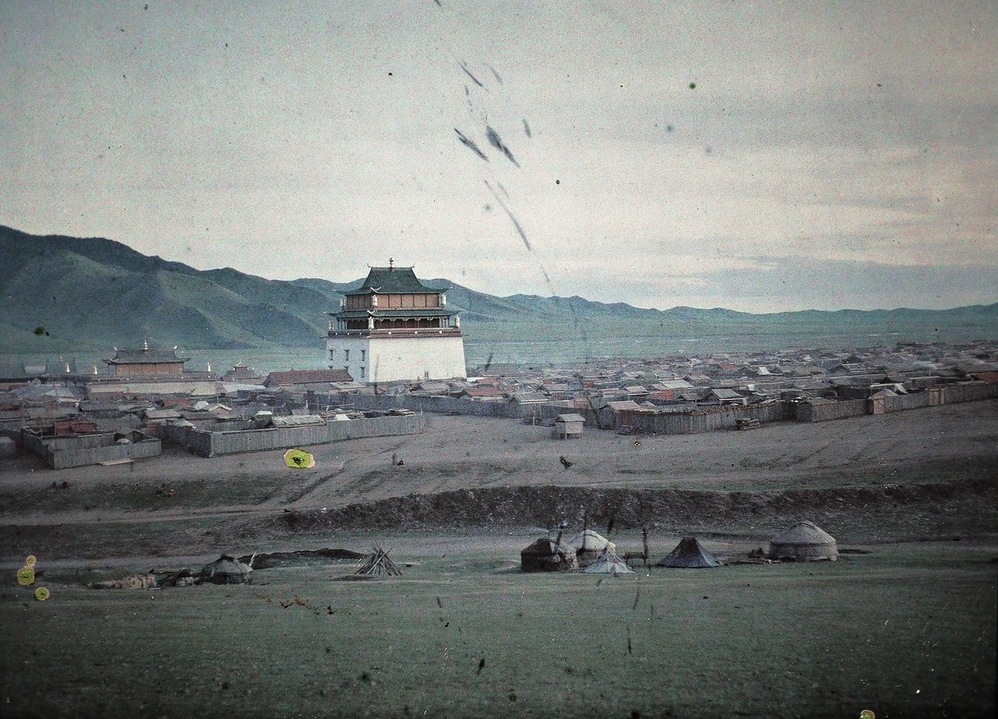|
Sükhbaatar Square
Sükhbaatar Square ( mn, Сүхбаатарын талбай, pronounced ''Sükhbaatariin Talbai'') is the central square of Mongolia's capital Ulaanbaatar. The square was named for Mongolian's revolutionary hero Damdin Sükhbaatar after his death in 1923. The square's name was changed to Chinggis Square ( mn, Чингисийн талбай, pronounced ''Chinggisiin Talbai'') in 2013 in honor of Genghis Khan, considered the founding father of Mongolia, but the original name was restored in 2016. The center of the plaza features an equestrian statue of Damdin Sükhbaatar, while a large colonnade monument dedicated to Genghis Khan, as well as to Ögedei Khan and Kublai Khan, dominates the square's north face directly in front of the Saaral Ordon (Government Palace). Buildings Government Palace (built in 1951 on the spot formally occupied by the national theater or "Green Domed Theater") dominates the north side of the square. It is fronted by a large colonnade monument to Genghis ... [...More Info...] [...Related Items...] OR: [Wikipedia] [Google] [Baidu] |
Public Square
A town square (or square, plaza, public square, city square, urban square, or ''piazza'') is an open public space, commonly found in the heart of a traditional town but not necessarily a true square, geometric square, used for community gatherings. Related concepts are the civic center, the market square and the village green. Most squares are hardscapes suitable for open market (place), markets, concerts, political rallies, and other events that require firm ground. Being centrally located, town squares are usually surrounded by small shops such as bakeries, meat markets, cheese stores, and clothing stores. At their center is often a water well, well, monument, statue or other feature. Those with fountains are sometimes called fountain squares. By country Australia The Adelaide city centre, city centre of Adelaide and the adjacent suburb of North Adelaide, in South Australia, were planned by Colonel William Light in 1837. The city streets were laid out in a grid plan, with t ... [...More Info...] [...Related Items...] OR: [Wikipedia] [Google] [Baidu] |
Central Tower (Mongolia)
The Central Tower is an office skyscraper that located near the Sükhbaatar Square in Ulaanbaatar, Mongolia. It was built in 2009 and has 17 floors. The building was designed by Dennis Lau & Ng Chun Man Architects & Engineers (HK) Ltd. (DLN) and developed by Shangri-La Ulaanbaatar Ltd. The building is rated as grade-A commercial office tower, which has high quality and service standards. It is occupied by several notable luxury goods companies, such as Louis Vuitton, Zegna, Hugo Boss, Montblanc, and Ulysse Nardin. The building is also used as the headquarters for Unitel, the country's tech company. There is a Marco Polo statue in front of the building. It was built in 2011 by sculptor Denzen Barsbold. See also * International Commercial Center * List of tallest buildings in Mongolia Mongolia has seen a construction boom starting in 2007. Ulaanbaatar is seeing new highrises at least in height. The 'High rise building code' and 'Seismic design building code' recomme ... [...More Info...] [...Related Items...] OR: [Wikipedia] [Google] [Baidu] |
Dashdorjiin Natsagdorj
Borjgin Dashdorjiin Natsagdorj ( mn, Боржгин Дашдоржийн Нацагдорж; 17 November 1906 - 13 June 1937), was a Mongolian poet, writer, and playwright, and founder of the Mongolian Writer's Union. He is considered one of the founding fathers of modern Mongolian literature and Mongolia's first "classic Socialist" writer. Also, he was master of the short essay. Life Natsagdorj was born at a site of the lake Gün Galuutai in Darkhan Chin Wang khoshuu (what is now Bayandelger sum of Tov Province to the impoverished family of an untitled noble (''hohi taiji''). Because of the lack of formalized education in Mongolia at that time he received much of his early education from a tutor. From the age of 11, he worked in the Mongolian People's Army as a writer. Between 1926 and 1929, he stayed in Germany and France and set up the Mongolian Writers' Union. Starting 1930, Natsagdorj became more doubtful of leftist ideologies. He was arrested in 1932 but released again l ... [...More Info...] [...Related Items...] OR: [Wikipedia] [Google] [Baidu] |
Mongolian Revolution Of 1921
The Mongolian Revolution of 1921 (Outer Mongolian Revolution of 1921, or People's Revolution of 1921) was a military and political event by which Mongolian revolutionaries, with the assistance of the Soviet Red Army, expelled Russian White Guards from the country, and founded the Mongolian People's Republic in 1924. Although nominally independent, the Mongolian People's Republic was a satellite state of the Soviet Union until a third Mongolian revolution in January 1990. The revolution also ended the Chinese Beiyang government's occupation of Mongolia, which had begun in 1919. The official Mongolian name of the revolution is "People's Revolution of 1921" or simply "People's Revolution" ( mn, Ардын хувьсгал, Ardyn khuvisgal). Prelude Mongolian Revolution of 1911 For about three centuries, the Qing dynasty had enforced—albeit with mixed success—a policy of segregating the non-Han peoples on the frontier from the Han people. By the end of the 19th century, ho ... [...More Info...] [...Related Items...] OR: [Wikipedia] [Google] [Baidu] |
Outer Mongolian Revolution Of 1921
The Mongolian Revolution of 1921 (Outer Mongolian Revolution of 1921, or People's Revolution of 1921) was a military and political event by which Mongolian revolutionaries, with the assistance of the Soviet Red Army, expelled Russian White Guards from the country, and founded the Mongolian People's Republic in 1924. Although nominally independent, the Mongolian People's Republic was a satellite state of the Soviet Union until a third Mongolian revolution in January 1990. The revolution also ended the Chinese Beiyang government's occupation of Mongolia, which had begun in 1919. The official Mongolian name of the revolution is "People's Revolution of 1921" or simply "People's Revolution" ( mn, Ардын хувьсгал, Ardyn khuvisgal). Prelude Mongolian Revolution of 1911 For about three centuries, the Qing dynasty had enforced—albeit with mixed success—a policy of segregating the non-Han peoples on the frontier from the Han people. By the end of the 19th century, ho ... [...More Info...] [...Related Items...] OR: [Wikipedia] [Google] [Baidu] |
Bogd Khan
Bogd Khan, , ; ( – 20 May 1924) was the khan of the Bogd Khaganate from 1911 to 1924, following the state's ''de facto'' independence from the Qing dynasty of China after the Xinhai Revolution. Born in Tibet, he was the third most important person in the Tibetan Buddhist hierarchy as the 8th Jebtsundamba Khutuktu, below only the Dalai Lama and Panchen Lama, and therefore also known as the "Bogdo Lama". He was the spiritual leader of Outer Mongolia's Tibetan Buddhism. His wife Tsendiin Dondogdulam, the Ekh Dagina (' Dakini Mother'), was believed to be a manifestation of White Tara. Life The future Bogd Khan was born in 1869 in the area of Lhasa, in a family of a Tibetan official. He was born as Agvaan Luvsan Choijinnyam Danzan Vanchüg. His father, Gonchigtseren, was an accountant at the 12th Dalai Lama's court. The boy was officially recognized as the new incarnation of the Bogd Gegen in Potala in the presence of the 13th Dalai Lama and the Panchen Lama. The new Bogd ... [...More Info...] [...Related Items...] OR: [Wikipedia] [Google] [Baidu] |
Mongolian Wrestling
Mongolian wrestling, known as Bökh (Mongolian script: ; Mongolian Cyrillic: Бөх or Үндэсний бөх), is the folk wrestling style of Mongols in Mongolia, Inner Mongolia and other regions where touching the ground with anything other than a foot loses the match. ''Bökh'' means "firmness, reliability, vitality, wrestler", from Mongolic root *''bekü'' "firm, hard, solid; fighter, strong man" possibly from Turkic *''böke'' "warrior" < "big snake". Wrestling is the most important of the Mongolian culture's historic "Three Manly Skills", that also include horsemanship and . considered wrestling to be an important way to keep his army in go ... [...More Info...] [...Related Items...] OR: [Wikipedia] [Google] [Baidu] |
Gandantegchinlen Monastery
The Gandantegchinlen Monastery ( mn, Гандантэгчинлэн хийд, ''Gandantegchinlen khiid'', short name: Gandan mn, Гандан) is a Mongolian Buddhist monastery in the Mongolian capital of Ulaanbaatar that has been restored and revitalized since 1990. The Tibetan name translates to the "Great Place of Complete Joy". It currently has over 150 monks in residence. It features a 26.5-meter-high statue of Avalokiteśvara. It came under state protection in 1994. History The monastery was constructed by order of the 5th Jebtsundamba Khutuktu in 1809. The first temple was the Gungaachoilin Datsan. Only one wooden pillar remains from this temple. In 1838, the Gandantegchenlin Temple was built along with the private residence of the Jebtsundamba Khutuktu. The 13th Dalai Lama stayed in the residence in 1904. In 1840, the Vajradhara Temple was built. In 1869, the Zuu Temple was built. In 1913, the tall Avalokiteśvara temple was built. In 1925, the temple for keeping the re ... [...More Info...] [...Related Items...] OR: [Wikipedia] [Google] [Baidu] |
Jebtsundamba Khutughtu
The Jebtsundamba Khutuktu, , ; zh, c=哲布尊丹巴呼圖克圖, p=Zhébùzūn Dānbā Hūtúkètú; bo, རྗེ་བཙུན་དམ་པ་ཧུ་ཐུག་ཐུ་, Jetsün Dampa Hutuktu; "Venerable Excellent tulku, incarnate lama" are the spiritual heads of the Gelug lineage of Tibetan Buddhism in Mongolia. They also hold the title of ''Bogd Gegeen'', making them the top-ranked lamas in Mongolia. History The first Jebtsundamba, Zanabazar (1635–1723), was identified as the Reincarnation#Buddhism, reincarnation of the scholar Taranatha of the Jonang school of Tibetan Buddhism. Zanabazar was the son of the Tüsheet Khan Gombodorj, ruler of central Khalkha Mongolia, and himself became the spiritual head of the Khalkha Mongols. On May 29, the Jebtsundamba Khutukhtu paid homage to the Kangxi Emperor in 1691 at Dolonnor. Like Zanabazar, the 2nd Jebtsundamba Khutughtu was a member of Mongolia's highest nobility and direct descendant of Genghis Khan. After Chingü ... [...More Info...] [...Related Items...] OR: [Wikipedia] [Google] [Baidu] |







